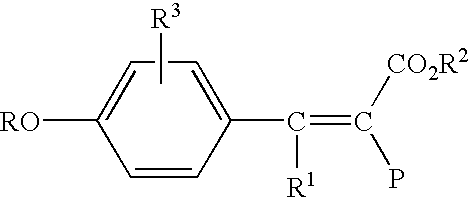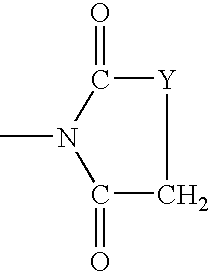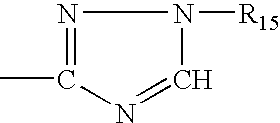Compositions and method for improving reheat rate of PET using activated carbon
a technology of activated carbon and compositions, which is applied in the direction of rigid containers, buttons, synthetic resin layered products, etc., can solve the problems of negative effect on the visual appearance of the pet bottle, darkening (lower l*), etc., and achieve the reduction of free acetaldehyde, the effect of minimizing the impact of additives and improving the reheat rate of pet compositions
- Summary
- Abstract
- Description
- Claims
- Application Information
AI Technical Summary
Benefits of technology
Problems solved by technology
Method used
Image
Examples
second embodiment
[0047] In a second embodiment, there is provided a process for the manufacture of a polyester composition containing polyester polymers such as a polyalkylene terephthalate or naphthalate polymer made by transesterifying a dialkyl terephthalate or dialkyl naphthalate or by directly esterifying terephthalic acid or naphthalene dicarboxylic acid. The polyester polymer composition is made by adding activated carbon to a melt phase for the manufacture of the polyester polymer in the presence of an active phosphorus containing compound. By an active phosphorus containing compound is meant a phosphorus compound actively reacting or capable of reacting with metal compounds present in the melt and / or active to decrease the catalytic activity of activated carbon (to the extent that activated carbon has catalytic activity) as activated carbon is added to the melt phase.
[0048] In the conventional method for making a polyester, phosphorus containing compounds are generally added to the melt pha...
example 1
[0105] PET A is a polyethylene terephthalate polymer modified with 1.5 mole % cyclohexanedimethanol prepared from purified terephthalic acid and having an It.V. of about 0.80 dL / g, catalyzed with an antimony compound and not containing activated carbon or any other added reheat rate enhancing additive or any intentionally added reducing agent to cause the formation of antimony metal.
[0106] Samples of PET A were prepared containing activated carbon (AC), black iron oxide (BIO) and carbon black (CB) reheat additives. Five different types of AC were used, all available from NORIT Americas Inc., under the tradenames of: Darco.RTM. GFP, Darco.RTM. Gro-Safe, Darco.RTM. G-60, Darco.RTM. Insul, and Darco.RTM. S-51. Darco.RTM. GFP is a powdered activated carbon produced by steam activation of lignite coal with a d.sub.50 particle size of 12 .mu.m. Darco.RTM. Gro-Safe is a specialty powdered activated carbon for agricultural applications and has and a d.sub.50 particle size of 19 .mu.m. Darco...
example 2
[0113] Activated carbon, BIO and reduced antimony (RA) reheat agents were added to several PET B polymers made according to the recipe below. The same five activated carbon samples described in Example 1 were used. The BIO sample was the same as used in Example 1. The RA reheat agent was formed in-situ by the addition of phosphorous acid reducing agent to produce a calculated amount of reduced elemental antimony acting as a reheat agent in the range of about 10 to 100 ppm. PET B polymers were prepared in the following manner. A typical charge of reactant to a 5-L three-necked round bottom flask is shown in the Table 1A below.
2 TABLE 1 A Reactant Amount (grams) Dimethyl terephthalate 1941.9 Ethylene glycol 1230.23 1,4-Cyclohexanedimethanol 25.96 Manganese acetate (tetrahydrate) 0.475 Antimony trioxide 0.580 Acetyltriisopropyl titanate (ATIP) in 11.60 Ethylene glycol (0.334 wt % Ti)
[0114] The reaction mixture was heated and stirred and methanol was removed via a packed column. The tem...
PUM
| Property | Measurement | Unit |
|---|---|---|
| Fraction | aaaaa | aaaaa |
| Fraction | aaaaa | aaaaa |
| Fraction | aaaaa | aaaaa |
Abstract
Description
Claims
Application Information
 Login to View More
Login to View More - R&D
- Intellectual Property
- Life Sciences
- Materials
- Tech Scout
- Unparalleled Data Quality
- Higher Quality Content
- 60% Fewer Hallucinations
Browse by: Latest US Patents, China's latest patents, Technical Efficacy Thesaurus, Application Domain, Technology Topic, Popular Technical Reports.
© 2025 PatSnap. All rights reserved.Legal|Privacy policy|Modern Slavery Act Transparency Statement|Sitemap|About US| Contact US: help@patsnap.com



